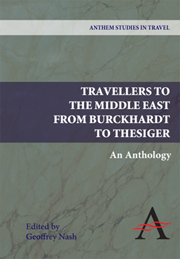Book contents
- Frontmatter
- Contents
- Acknowledgements
- Introduction
- PART ONE THE COMING OF EMPIRE 1800–1879
- The Ottoman Empire and Egypt
- Arabia
- Persia
- 1 A Journey through Persia, Armenia and Asia Minor
- 2 Sketches of Persia
- 3 Travels in the Persian Provinces of the Caspian
- 4 Glimpses of Life and Manners in Persia
- 5 Travels in Central Asia
- 6 Early Adventures in Persia, Susiana and Babylonia
- PART TWO COLONIALISM AND RESISTANCE 1880–1950
- Bibliography
6 - Early Adventures in Persia, Susiana and Babylonia
from Persia
Published online by Cambridge University Press: 05 March 2012
- Frontmatter
- Contents
- Acknowledgements
- Introduction
- PART ONE THE COMING OF EMPIRE 1800–1879
- The Ottoman Empire and Egypt
- Arabia
- Persia
- 1 A Journey through Persia, Armenia and Asia Minor
- 2 Sketches of Persia
- 3 Travels in the Persian Provinces of the Caspian
- 4 Glimpses of Life and Manners in Persia
- 5 Travels in Central Asia
- 6 Early Adventures in Persia, Susiana and Babylonia
- PART TWO COLONIALISM AND RESISTANCE 1880–1950
- Bibliography
Summary
Layard's main claim to fame was as an archaeologist, but he also had a career in public life, first as a Member of Parliament, and then as a diplomat, culminating in a period as ambassador to Turkey between 1877 and 1880. He is, however, most celebrated for his expeditions to Nineveh and the excavations he made there, described in Nineveh and its Remains (1849) and Discoveries in the Ruins of Nineveh and Babylon (1851). His Early Adventures in Persia, Susiana and Babylonia was published in 1887, more than four decades after the journeys it describes. While a young man Layard left a career in the law to travel in the East with his friend Edward Mitford. Determining on Ceylon as their destination, they set off across Turkey and Syria to Jerusalem, where they split, Layard exploring on his own the ancient sites of Petra and Jerash. Reunited, they proceeded to Baghdad then accompanied a caravan to Kermanshah where Layard resumed his investigations of ancient inscriptions. At a time of tension between Britain and Persia over the former's campaign in Afghanistan the companions were suspected of being spies. So in Hamadan they split for the second and last time, Layard proceeding south to Isfahan and the wild areas of Luristan where the Bakhtiari tribes lived and operated beyond the control of the Persian government. There Layard ‘travelled far and wide, studying archaeological sites, copying rock-cut inscriptions, taking notes on tribal organization, exploring the possibilities of trade with India’ (Wright 1977: 160).
- Type
- Chapter
- Information
- Travellers to the Middle EastAn Anthology, pp. 127 - 136Publisher: Anthem PressPrint publication year: 2009



